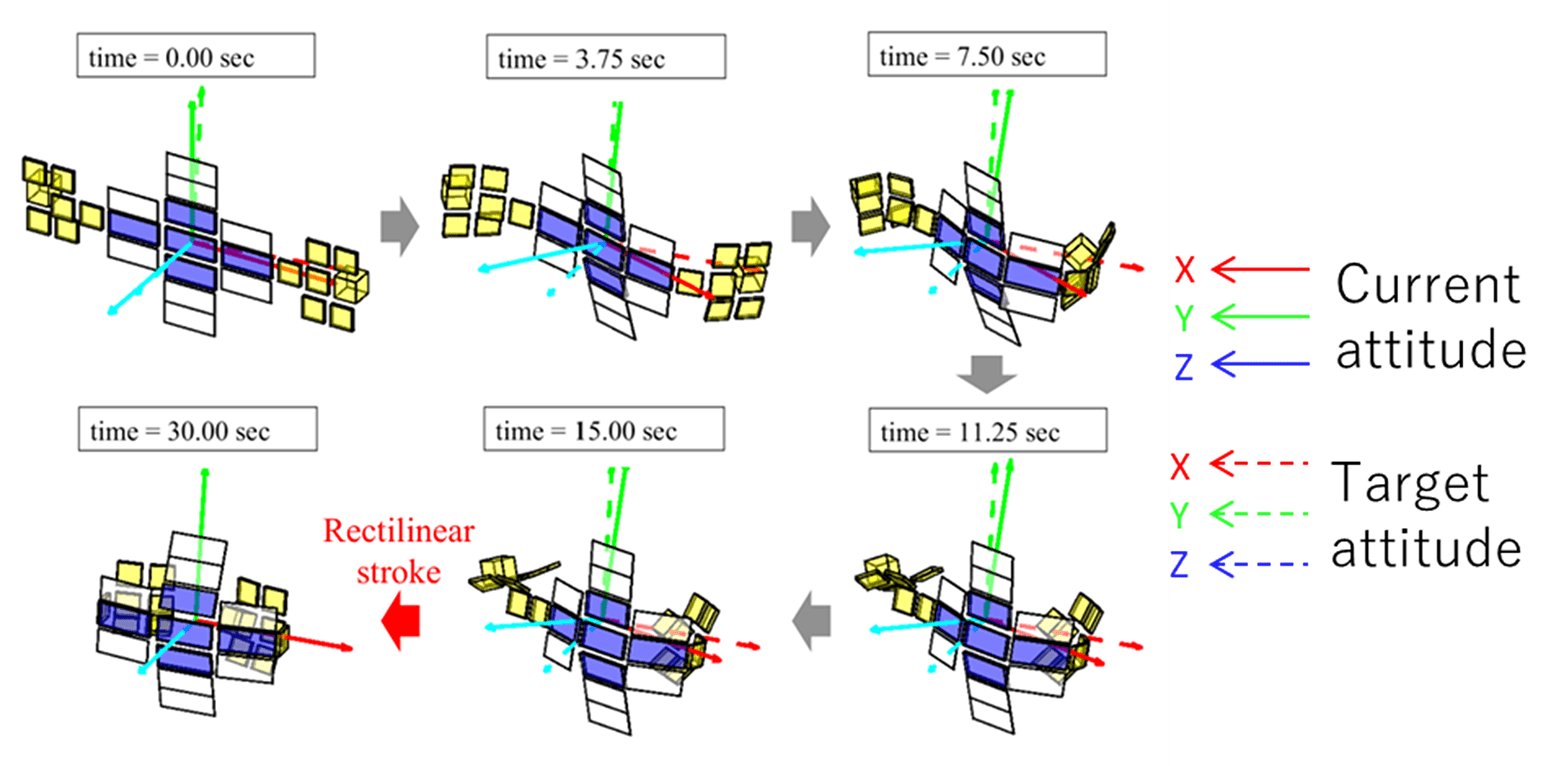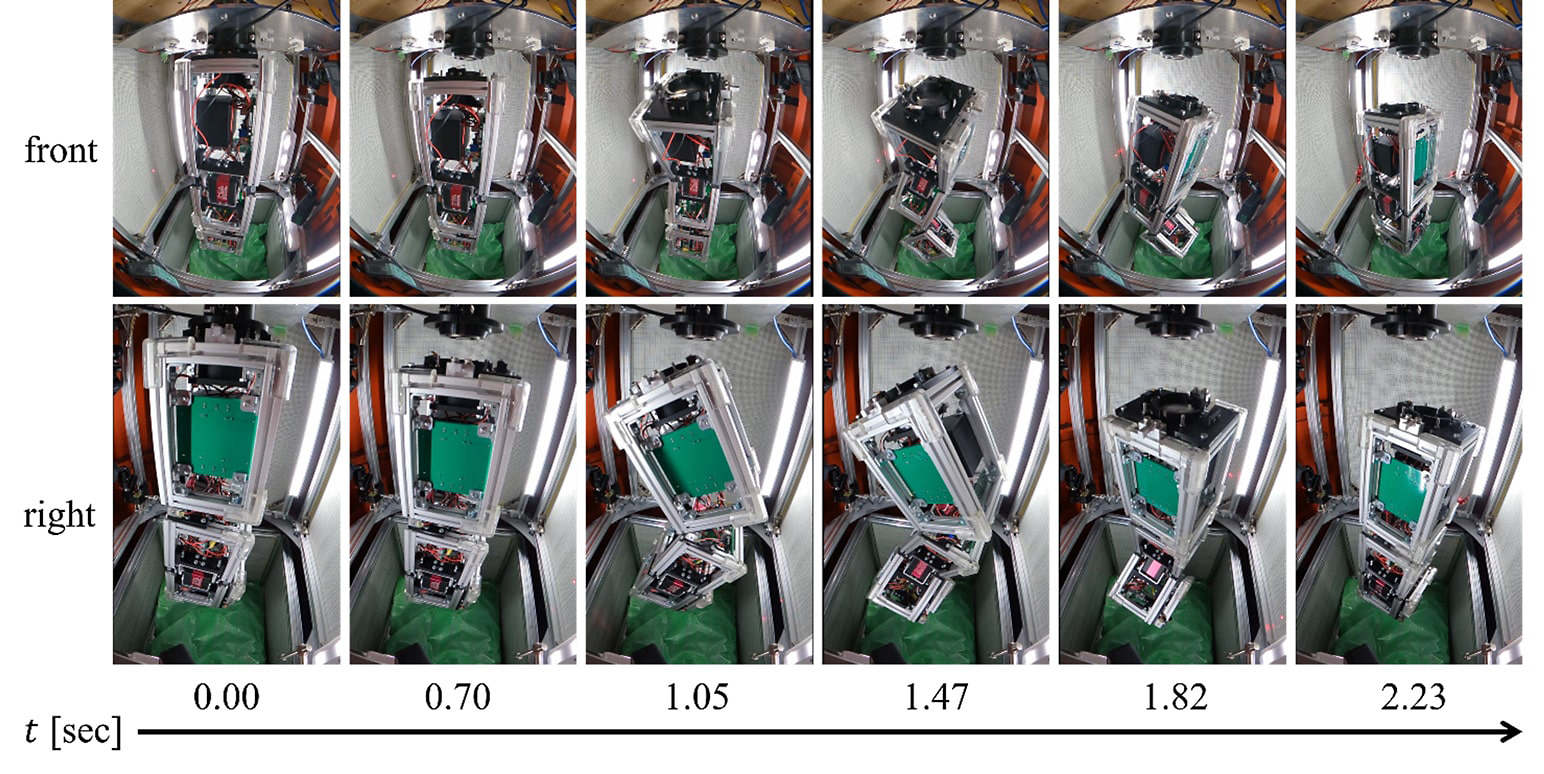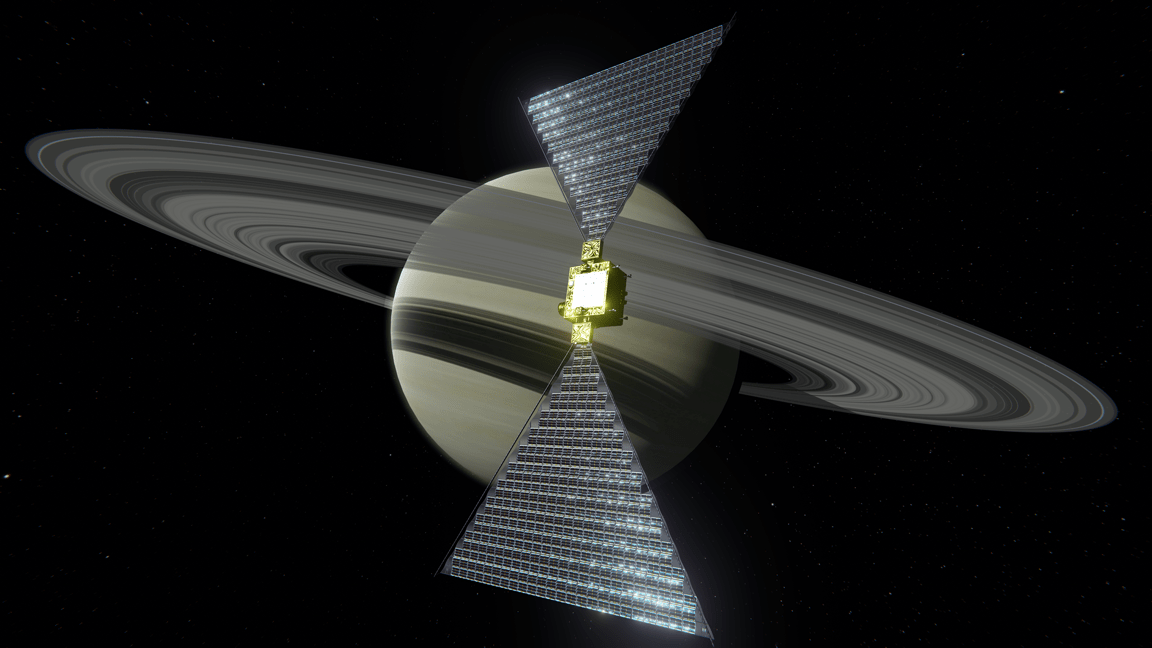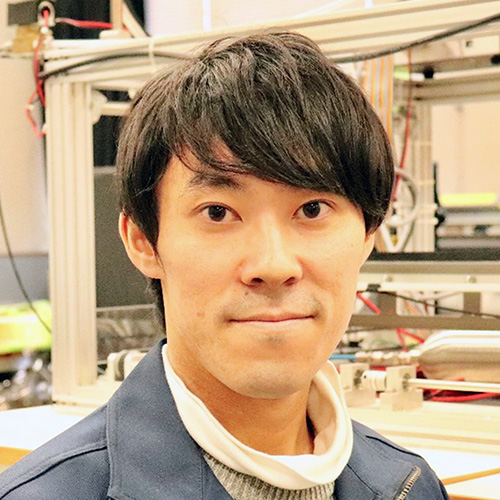Novel space exploration opened up by transforming spacecraft
Dec. 11, 2024 | Aerospace Project Research Associate, ISAS people
Research Summary
Transformable spacecraft have been frequently depicted in fictional works such as robot animation. Recently, however, several such transformable spacecrafts have been proposed for real space missions. If a spacecraft has the ability to reconfigure its structure (or move multiple joints), the following new functions can be expected.
- By significantly changing its structure, it can transform into multiple spacecraft and adapt to various mission situations.
- The spacecraft is able to perform propellant-efficient*1 attitude control and orbit control*2 using joint actuation.
- The spacecraft can carry out dexterous multitasking by using redundant number of joints.
In my research, the second point, propellant-efficient attitude and orbit control is mainly investigated.
First, for attitude control, we have proposed a control method referred to as "nonholonomic attitude control*3. A typical example of nonholonomic attitude control is known as "the righting reflex of falling cat", in which a cat that falls from an upside-down position can lands on its feet by moving its body in the air (Fig. 1). Similarly, a transformable spacecraft can rapidly and largely change its body orientation by moving its joints in the proper sequence while orbiting in space. My research uses this property to propose a nonholonomic attitude control method that simultaneously achieves the target body configuration and target attitude of a spacecraft (Fig. 2).


For orbit control, I have proposed a new "solar sail" that utilizes the reconfigurable structure. In fact, solar radiation has a force that pushes objects called "solar radiation pressure*4". As the name implies, "solar sailing" is orbit control that obtains propulsion from solar radiation in space. In conventional solar sailing, propulsion is obtained only from a single large flat membrane, so antennas, cameras, and other equipment cannot be pointed in the target direction when the sail changes orientation. With a transformable spacecraft, however, the shape and orientation can be changed independently and arbitrarily, allowing all equipment to be pointed in the target direction while still providing desired thrust by solar radiation pressure.
My research has contributed to mission considerations in the research group of the Transformable spacecraft Currently, I am advancing a plan to test the proposed nonholonomic attitude control studied by that research group in an actual microgravity environment.Fig. 3 shows a drop tower microgravity experiment with a model of a 3U CubeSat. A microgravity environment is produced by dropping a capsule from a high tower, and the experiments confirm how a spacecraft moves in the environment.

My research also contributes to the successor mission of the Solar Power Sail Demonstrator "IKAROS," which JAXA successfully launched in 2010. For example, OPENS (Outer Planet Exploration by Novel micro-Spacecraft) has IKAROS-heritage thin-film solar array that can be actuatable with motors, and can take advantage of the results of this research (Fig. 4).

Furthermore, the results of this research can be applied not only to transformable spacecraft but also to human body motion. We are applying the results of this research to examine how to efficiently change the orientation of the body in a microgravity environment where there is nothing to hold on to (Fig. 5).

I have been enthusiastic about "Mobile Suit Gundam" since I was in elementary school, and through this research I would like to contribute to the realization of robots that can perform acrobatic movements as in the anime. In addition, I have longed to be an astronaut since I was a child, and through my research on human body movements under microgravity, I would like to contribute to making life in space as close as possible.
Terminologies
- *1 propellant-efficient : When flying in space, the spacecraft cannot “kick the ground” or obtain lift from the air, so its position and rotation are controlled by the reaction force of propellant injection. Therefore, once the propellant is exhausted, no more missions can be performed, so the life of a spacecraft can be extended through efficient use of propellant.
- *2 attitude control and orbit control : “Attitude" refers to the three-dimensional orientation of the spacecraft, and "orbit" refers to the trajectory of the position of the center of gravity of the spacecraft. Since the motion of a rigid body is uniquely determined once the position and orientation of the center of gravity are determined, it is important to control both the attitude and orbit.
- *3 nonholonomic attitude control : Nonholonomic motion is motion in which velocity constraints are imposed. For example, a car is a typical nonholonomic motion because its movable direction is restricted to the direction in which its tires are facing. Conversely, holonomic motion is motion for which constraints are imposed on position. For example, a train is a typical holonomic motion because it can only move on rails. A car cannot move directly sideways because of the restriction on the direction of its tires, but it can move back and forth while turning the steering wheel well, and consequently can move directly sideways. Thus, nonholonomic motion is characterized by the ability to move freely with proper control, even though the instantaneous motion is constrained.
- *4 solar radiation pressure : The solar radiation pressure that a human receives on the ground is a very weak force, only a few thousandths of the weight of a one-yen coin, but when flying in space, there is no friction with the ground or air resistance, so such a weak force can be used as propulsion.


 KUBO Yuki / Dept. of Space Flight Systems, ISAS
KUBO Yuki / Dept. of Space Flight Systems, ISAS